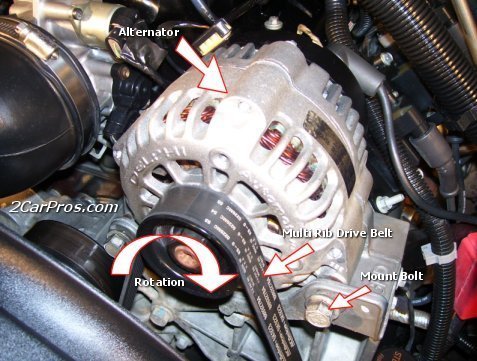The alternator wiring diagrams are below here is a guide to yelp check the connections
https://www.2carpros.com/articles/how-to-check-wiring
Since the early '70s GM has built the voltage regulator inside the generator. They did that to make it a quick unit replacement for mechanics who didn't understand how these simple circuits work or how to troubleshoot them. That also means you buy parts that aren't needed when you replace what is needed. Their second design was easy to diagnose and repair, and it often resulted in not having to buy the entire rebuilt generator. I considered this the world's second best generator design.
Starting with 1987 models they switched to by far the world's worst design ever and they don't appear to want to improve it. Don't even waste your time trying to diagnose a defective voltage regulator or trying to replace it. You have to unsolder three tabs on the diode block, (through the housing), all at the same time to allow the stator winding to be removed. That almost always results in breaking off at least one of those tabs, so you'll need a new diode block. After you remove a plastic cover, the regulator is bolted to the back housing, and there's no way to test it. You won't want to take a chance on it being good after going through all that work, so it will be replaced too.
They get real high current output from these small packages, in part, by decreasing the space between the stationary stator winding and the spinning field winding. Just a little play in one of the bearings will cause them to hit each other and lock up. For this reason, all the rebuilding kits come with new bearings too. You'll spend the better part of an afternoon on the work bench with this thing and have almost as much in it for parts as you would just buying a professionally-rebuilt generator with a warranty.
Also, due to the design of the regulator's switching circuitry, these generators develop huge, harmful voltage spikes that can damage the internal diodes and voltage regulator, and can interfere with computer sensor signals. I just had another one yesterday. The only symptom was an intermittent severe loss of power and rough running. Under load, all the generator could develop was 52 amps. This was a 150 amp generator.
The clue when testing these is to measure full-load current output and "ripple" voltage. You need a professional load tester for both of those. With one failed diode of the six, all you'll be able to get is exactly one third of the generator's rated current. 30 amps from the common 90 amp generator is not enough to run the entire electrical system under all conditions. The battery will have to make up the difference until it slowly runs down over days or weeks.
AC generators use three-phase output. The loss of one diode results in the loss of one phase. Output voltage drops during that missing phase. This is where ripple voltage becomes a critical factor. At it's least serious, it can cause a whine on your AM radio that changes in pitch with changes in engine speed. At its most serious it greatly increases the voltage and number of those voltage spikes.
It is very common to hear people say they're on their fifth or sixth replacement generator on GM vehicles. It is important to understand that the battery is the key component in damping and absorbing those voltage spikes but as it ages, it losses its ability to do that. When you need to replace the generator, to reduce the number of repeat failures, replace the battery at the same time unless it is less than about two years old. On the car I had yesterday, there was corrosion around the battery's posts which is strong evidence it is going to fail within the next six months. In fact, that battery was over four years old so battery AND generator failures could be predicted.
Check out the diagrams (Below). Please let us know if you need anything else to get the problem fixed.
Image (Click to make bigger)
Wednesday, March 4th, 2015 AT 2:04 PM



